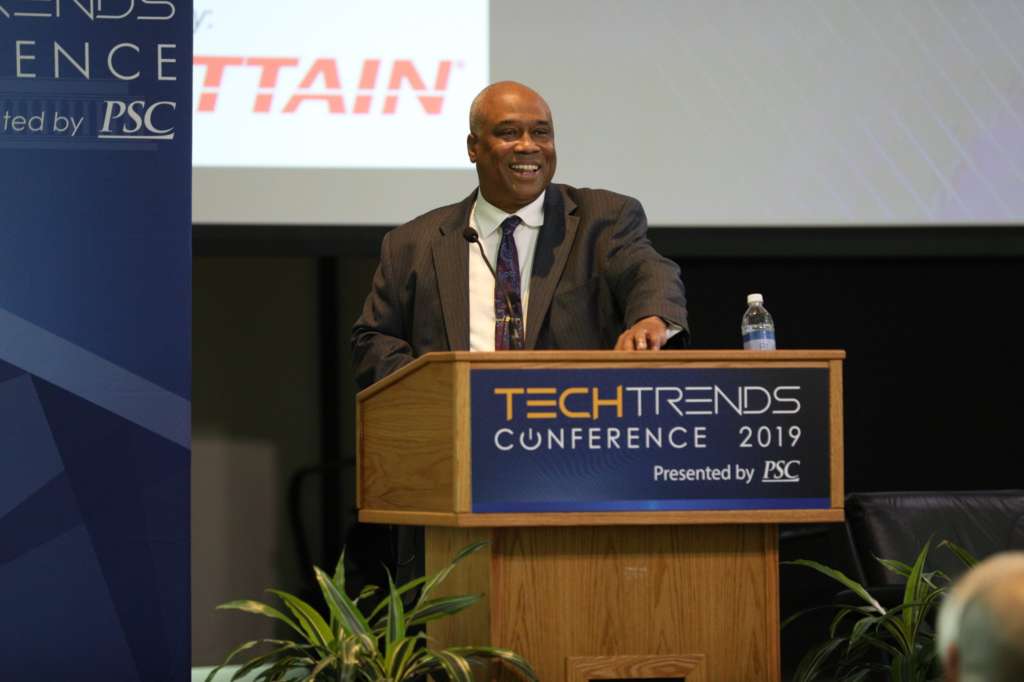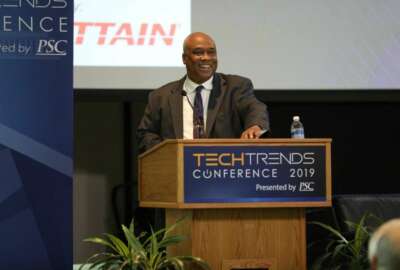
Frictionless federal acquisition? It’s possible and a new online tool can help
OFPP and ACT-IAC partnered to collect and describe acquisition innovations as a way to reduce the friction of acquisition through a new Periodic Table of...
Best listening experience is on Chrome, Firefox or Safari. Subscribe to Federal Drive’s daily audio interviews on Apple Podcasts or PodcastOne.
One of the best questions that came up at the recent 2019 Imagine Nation ELC conference in Philadelphia, Pennsylvania was during a panel on acquisition. It went something like this: If the Federal Acquisition Regulations are a Frankenstein monster of cobbled together rules and requirements, why not just start over?
A question many federal acquisition and program managers probably have asked themselves at least a dozen times a year.
While the 2,000 page FAR probably has some body parts that agencies could do without, there is no reason to kill the monster.
Meagan Metzger, founder and CEO of Dcode, which promotes the use of commercial technology in the public sector, said there are important concepts that the FAR promotes that every contracting officer or program manager needs to know.
Chris Hamm, the director of FEDSIM at the General Services Administration, offered a common refrain—the FAR lets you do almost anything, especially under Parts 8.4 and 12.
Then why are agencies and vendors alike so excited about Other Transaction Authorities (OTAs) or Commercial Solution Openings (CSOs) as a way to avoid—get around—using the FAR?
New data from the Professional Services Council’s 2019 Vision Forecast found the Defense Department’s use of OTA’s mushroomed by 40% in 2018 over 2017 and some estimates say the Pentagon could spend as much as $7 billion through this approach in 2019.
GSA and the Department of Homeland Security also have begun using similar authorities.
GSA, for instance, has done eight awards under its CSO authority. Tom Howder, the acting deputy commissioner of the Federal Acquisition Service, said at the PSC event that 75% of the awards went to companies without a GSA schedule, meaning non-traditional contractors.
It’s clear agencies want to find a way around the both real and perceptive arduous requirements of the FAR.
But if the only way to reduce the friction of the federal acquisition process is by not using the FAR, then something more has to be done.
Dr. Michael Wooten, the administrator of the Office of Federal Procurement Policy, seems to recognize this fact as the calls for expanding OTA and CSO authority continue to grow.

At the PSC Forecast event, for instance, Howder said he’d like OFPP to continue to focus on the simplification of federal procurement and even roll out the tools like OTAs and CSOs more broadly across government.
Wooten’s response is to call on technology such as artificial intelligence and robotics process automation to begin to reduce the friction causing requirements like market research or paperwork requirements.
“Things like professional services and IT development can be managed better. Customers should understand what it takes to deliver the solution that is required and we should have a reliable dialogue with industry to make that happen,” Wooten said at the ImagineNation ELC conference. “The power and potential of AI, machine learning and natural language processing is real and imagine what we can do to manage customer expectations of our customers. We can harvest data and return value to the taxpayer.”
Elements of acquisition innovation
In the short term, OFPP and ACT-IAC are trying to reduce the friction of acquisition through a new Periodic Table of Acquisition Elements.
Lesley Field, the deputy administrator of OFPP, said at the ImagineNation ELC conference that the goal a year ago when this project started was to come up with approaches to help the workforce be more creative and innovative.
“How do we make the FAR come to life?” Field asked. “We have a lot of flexibility in the FAR. Contracting officers have more authority than they think they do.”
The Periodic Table, which Gissa Sateri, an account executive with REI Systems and one of the team leaders, credited David Zvenyach, the former executive director of GSA’s 18F organization, with creating, details steps in each of the five phases of federal acquisition to promote innovation, creativity or just remind acquisition workers of the tools they have at their disposal.
Each entry includes a description of the item, the problem to be solved, the benefits of using this approach and any use cases or documentation that would be helpful to accomplish the goal.
“We are looking for wormholes through the FAR to get from point A to B faster, with less friction and with fewer obstacles,” said Tim Cooke, another project lead and president and CEO of ASI Government. “The bigger picture of this initiative is to speed up adoption of things that have been working. We have been finding those things, describing those to the workforce and giving them a place to find and learn so then they can begin to try them on their own.”
Not another playbook
Sateri said the group wanted to steer away from another playbook or white paper “that no one would ever read,” and create a public facing website that can be updated and improved over time.
“We laid out the stages of acquisitions, the steps under each phase, what is behind each of those steps, the description of those steps and what the benefits are for the use of that step and the samples we found,” she said.
Field said over the next year the working group will continue to look for innovative approaches that they can add to the periodic table. Additionally, she said OFPP will promote the website across the acquisition community. Field said OFPP and the Chief Acquisition Officer’s Council know it’s difficult to reach frontline acquisition workers so they want to raise the level of visibility of the new tool.
“We will work through the agency innovation advocates, industry liaisons, directors of Offices of Small and Disadvantage Business Utilization, category managers and others to create networks to share and let acquisition workers be more innovative,” she said. “We also will meet with the procurement lawyers and provide a demonstration to them and others as another way to promote the tools.”
The most important thing Wooten, Field and other federal acquisition leaders can do is provide contracting officers with the top cover to use the FAR without having to worry about auditors or Congress coming down on them for problems or failures. The best thing Wooten could do is share the Periodic Table with auditors and other overseers, explain to them OFPP’s goals and ensure agencies are working with them throughout the entire process of using an innovative method. If OFPP just puts the website out there, the “Field of Dreams” approach will not work.
Copyright © 2025 Federal News Network. All rights reserved. This website is not intended for users located within the European Economic Area.
Jason Miller is executive editor of Federal News Network and directs news coverage on the people, policy and programs of the federal government.
Follow @jmillerWFED
Related Stories

GSA, DoD kick off first test with new streamlined acquisition approach





